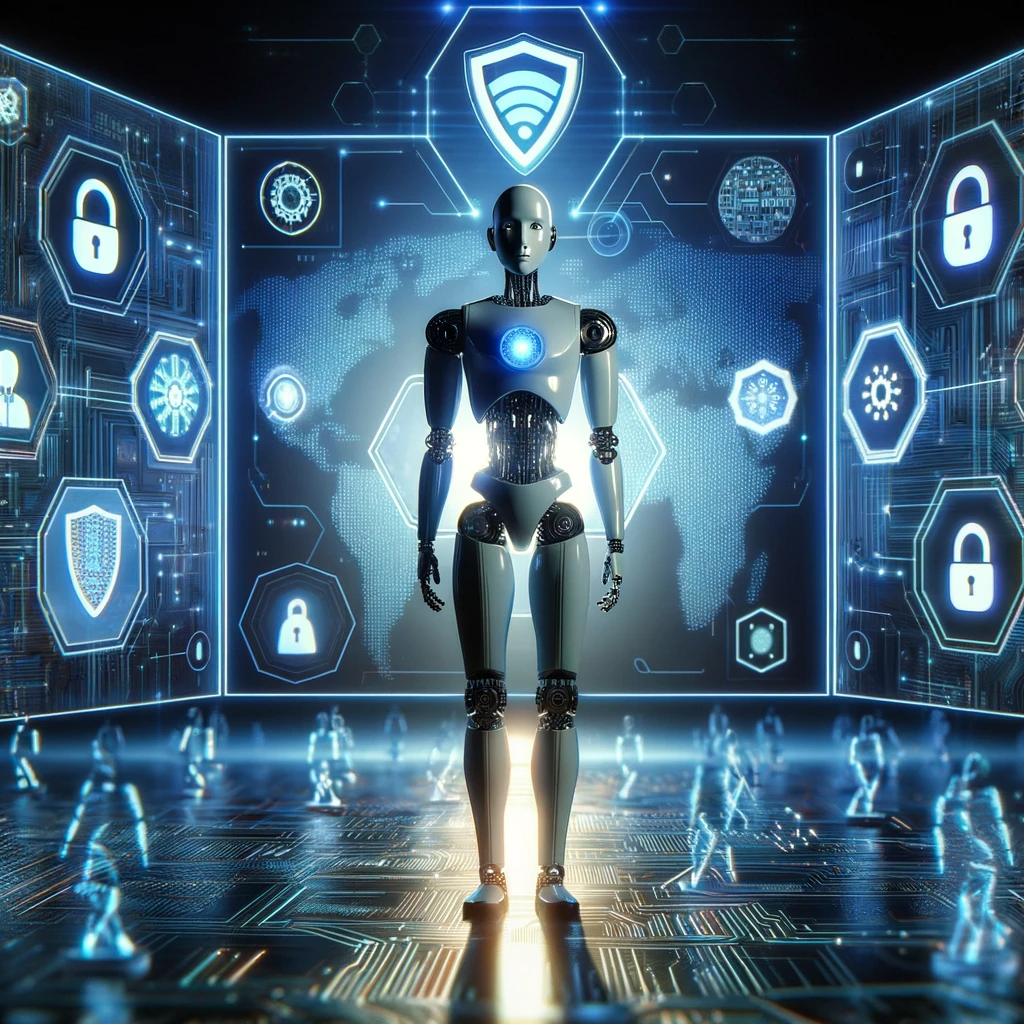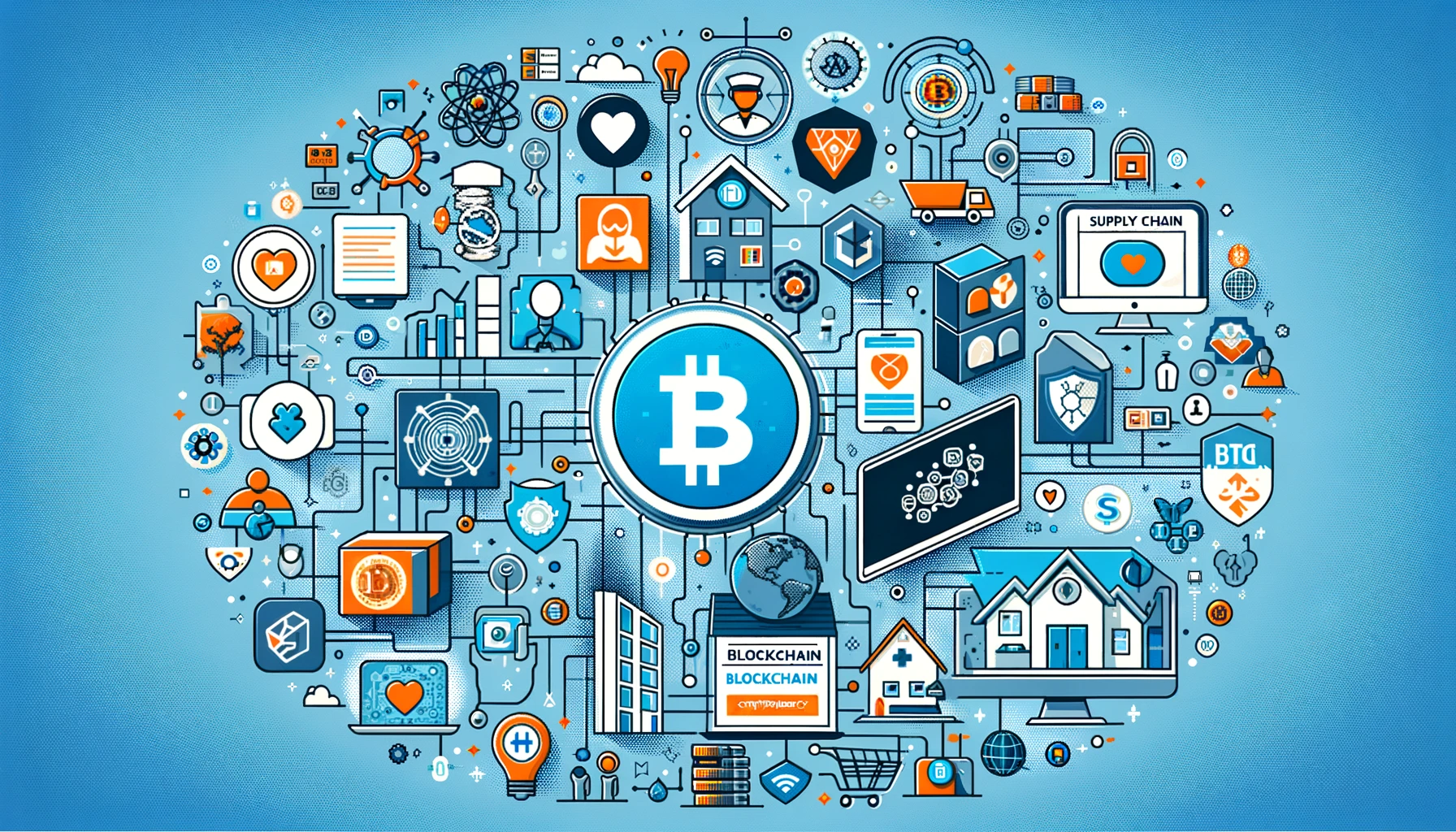
AI in Cybersecurity: Protecting Against Evolving Threats
In today’s digital world, our lives, businesses, and even governments rely heavily on technology. But with this incredible convenience comes a significant challenge: cybersecurity. Every day, new and more sophisticated cyber threats emerge, from sneaky phishing scams to devastating ransomware attacks. Traditional cybersecurity methods, while still vital, are struggling to keep pace with the sheer volume and cunning nature of these evolving threats.
Enter Artificial Intelligence (AI). Far from science fiction, AI is rapidly becoming the superhero of the cybersecurity world, offering powerful new ways to detect, prevent, and respond to cyberattacks. It’s not about replacing human experts, but empowering them with tools that can analyze vast amounts of data at lightning speed, spotting patterns and anomalies that even the most dedicated human might miss.
This article will explore how AI is revolutionizing cybersecurity, making our digital lives safer against an ever-changing landscape of threats. We’ll break down complex concepts into easy-to-understand language, showing you why AI isn’t just a buzzword, but a crucial shield in our digital defense.
The Evolving Threat Landscape: Why Traditional Defenses Fall Short
Imagine trying to catch every single raindrop in a storm with a single cup. That’s a bit like what traditional cybersecurity faces today. The sheer volume and complexity of cyber threats have exploded.
- Volume: Millions of new malware samples appear daily. Attackers launch billions of phishing emails.
- Speed: Automated attack tools can scan and exploit vulnerabilities across the internet in minutes.
- Sophistication: Cybercriminals are using advanced techniques, including AI themselves, to create highly evasive malware, personalized phishing campaigns, and complex multi-stage attacks that mimic legitimate user behavior.
- Zero-Day Attacks: These are attacks that exploit brand-new, unknown software vulnerabilities. Traditional signature-based defenses (which look for known "signatures" of malware) are useless against them.
- Human Factor: People remain the weakest link, susceptible to social engineering tricks like phishing, which traditional firewalls and antivirus struggle to block.
Relying solely on human analysts to sift through mountains of security alerts, logs, and network traffic is no longer sustainable. It’s like trying to find a needle in a haystack, but the haystack is growing by the second, and the needle keeps changing shape.
Understanding AI’s Role: A Beginner’s Guide
Before diving into how AI helps, let’s quickly demystify what AI, Machine Learning (ML), and Deep Learning (DL) actually mean in this context.
- Artificial Intelligence (AI): Broadly, it’s about making machines "smart" – able to perform tasks that typically require human intelligence, like problem-solving, understanding language, or recognizing patterns.
- Machine Learning (ML): A subset of AI. It’s about giving computers the ability to "learn" from data without being explicitly programmed for every scenario. Think of it like teaching a child by showing them many examples. In cybersecurity, an ML model learns what "normal" network traffic looks like, so it can spot "abnormal" activity.
- Deep Learning (DL): A subset of ML. It uses complex, multi-layered neural networks (inspired by the human brain) to learn from very large datasets. DL is excellent for tasks like image recognition (e.g., spotting malicious logos in phishing emails) and complex pattern analysis.
How does it "learn"?
AI systems are fed vast amounts of data – for cybersecurity, this means network traffic logs, malware samples, user login patterns, email content, and more. They then use algorithms to identify patterns, correlations, and anomalies within this data. The more data they process, the "smarter" and more accurate they become.
How AI is Transforming Cybersecurity: Key Applications
AI isn’t just a single tool; it’s a set of powerful capabilities being applied across various aspects of cybersecurity.
1. Advanced Threat Detection & Prevention
This is perhaps AI’s most impactful role. Instead of just looking for known threats, AI can identify suspicious behavior.
- Anomaly Detection: AI learns what "normal" network traffic, user behavior, or file activity looks like. If something deviates significantly from this norm – like a user logging in from an unusual location at 3 AM, or a program trying to access sensitive files it never has before – AI flags it as suspicious. This is crucial for catching zero-day attacks.
- Malware Analysis: AI can rapidly analyze new and unknown malware samples. It looks at their code, behavior, and how they interact with systems, identifying malicious intent even if the specific "signature" isn’t in a database yet. It can spot polymorphic malware (malware that constantly changes its code) that traditional antivirus often misses.
- Insider Threat Detection: Employees with malicious intent, or even just careless ones, can pose a huge risk. AI can monitor user activity patterns to detect unusual behavior that might indicate an insider threat, such as an employee suddenly trying to access sensitive data outside their normal work scope.
2. Automated Incident Response
When a security incident occurs, every second counts. AI can dramatically speed up the response process.
- Prioritization of Alerts: Security teams are often overwhelmed with thousands of alerts daily. AI can analyze these alerts, identify the truly critical ones, and prioritize them for human review, reducing "alert fatigue."
- Automated Remediation: For certain well-defined threats, AI can initiate immediate countermeasures without human intervention. This could include:
- Quarantining infected files.
- Blocking malicious IP addresses.
- Isolating compromised devices from the network.
- Forcing password resets for suspicious accounts.
- Security Orchestration, Automation, and Response (SOAR): AI is a core component of SOAR platforms, which integrate various security tools and automate routine tasks. This allows security teams to respond to common threats much faster and focus human expertise on complex, unique incidents.
3. Vulnerability Management
Finding weaknesses in systems before attackers do is critical. AI can help here too.
- Predictive Vulnerability Analysis: AI can analyze vast amounts of data about past vulnerabilities, system configurations, and patch histories to predict where new vulnerabilities might emerge and which systems are most at risk.
- Automated Penetration Testing: While still emerging, AI can be used to simulate attacks on a network, exploring potential weaknesses and attack paths much faster than human testers.
4. Phishing and Spam Detection
Email remains a primary attack vector. AI is excellent at filtering out malicious messages.
- Content Analysis: AI can analyze the text, links, attachments, and sender information in emails to identify characteristics of phishing, spam, and business email compromise (BEC) attempts. It can detect subtle cues that humans might miss.
- Behavioral Analysis: It can learn what legitimate email communication looks like for a specific organization or user, flagging anything that deviates.
5. Network Security
AI monitors network traffic to ensure its integrity and identify threats.
- Traffic Flow Monitoring: AI can analyze the flow of data packets across a network, looking for unusual spikes, communication with known malicious sites, or strange patterns that suggest a data breach or attack.
- IoT Security: The Internet of Things (IoT) brings billions of new, often insecure, devices online. AI can monitor the behavior of these devices, identifying if a smart camera or connected sensor is behaving abnormally (e.g., attempting to communicate with a strange server).
The Unmistakable Advantages of AI in Cybersecurity
Implementing AI offers several compelling benefits that elevate cybersecurity defenses to a new level:
- Speed and Scale: AI systems can process and analyze data at speeds and volumes impossible for humans. This means faster detection and response, crucial in the face of rapid, automated attacks.
- Accuracy and Reduced False Positives: While not perfect, AI can often be more accurate than traditional rule-based systems in identifying true threats, reducing the number of "false positives" (harmless activities mistakenly flagged as threats) that overwhelm human analysts.
- Proactive Defense: By analyzing patterns and predicting potential attack vectors, AI helps organizations move from a reactive "wait and see" approach to a more proactive, predictive defense strategy.
- Resource Optimization: AI automates routine, repetitive tasks, freeing up human security analysts to focus on complex investigations, strategic planning, and tasks that require nuanced human judgment. This helps combat the cybersecurity talent shortage.
- Adaptability: AI models can continuously learn and adapt to new threats and attack techniques. As new data becomes available, they can update their understanding of what constitutes a threat, making them highly resilient against evolving attacks.
Challenges and Considerations: A Balanced View
While AI offers immense promise, it’s not a magic bullet. There are important challenges and considerations:
- Data Quality and Bias: AI’s effectiveness heavily depends on the quality and quantity of the data it learns from. Biased, incomplete, or dirty data can lead to inaccurate predictions or blind spots.
- Adversarial AI: Just as defenders use AI, attackers are also leveraging it. "Adversarial AI" involves techniques to fool AI models (e.g., slightly altering malware to make it undetectable by an AI system) or to generate highly convincing phishing messages. This creates an AI vs. AI arms race.
- Complexity and Cost: Implementing and managing sophisticated AI cybersecurity solutions can be complex and expensive, requiring specialized skills and significant computational resources.
- Explainability (Black Box Problem): Sometimes, it’s hard to understand why an AI model made a particular decision. This "black box" problem can make it difficult for human analysts to trust or troubleshoot AI outputs, especially in critical security decisions.
- Ethical Concerns: As AI becomes more pervasive, concerns around privacy (how much data is collected and analyzed?) and accountability (who is responsible if an AI makes a wrong decision leading to a breach?) become more pressing.
- Not a Replacement for Humans: AI is a powerful tool, but it lacks human intuition, creativity, ethical reasoning, and the ability to handle truly novel, unforeseen situations.
The Future is Collaborative: AI and Human Intelligence
The most effective cybersecurity strategy isn’t about choosing between AI and humans; it’s about intelligent collaboration. AI excels at:
- Pattern Recognition: Sifting through vast datasets for anomalies.
- Speed: Responding in milliseconds.
- Automation: Handling repetitive, high-volume tasks.
Humans, on the other hand, bring:
- Critical Thinking: Analyzing complex, ambiguous situations.
- Intuition and Experience: Spotting subtle cues that AI might miss.
- Creativity and Strategy: Developing new defenses and understanding attacker motivations.
- Ethical Judgment: Making decisions that align with organizational values and legal requirements.
In the future, AI will continue to empower security analysts, allowing them to be more efficient and effective. It will handle the grunt work, allowing humans to focus on strategic initiatives, complex threat hunting, and the development of even more resilient security architectures.
Conclusion
The digital world is a dynamic place, and the threats we face online are constantly evolving. Traditional cybersecurity defenses, while foundational, are no longer sufficient on their own. Artificial Intelligence has emerged as a game-changer, offering unprecedented capabilities to detect, analyze, and respond to cyber threats with speed, scale, and accuracy that humans alone cannot achieve.
From pinpointing advanced malware and predicting vulnerabilities to automating incident response and fortifying our networks, AI is transforming how we protect our digital assets. While challenges remain, the clear path forward involves a powerful partnership between cutting-edge AI technologies and the invaluable expertise of human security professionals. By embracing AI, we are not just keeping pace with evolving threats; we are building a more robust, intelligent, and proactive defense for our increasingly interconnected world.



Post Comment